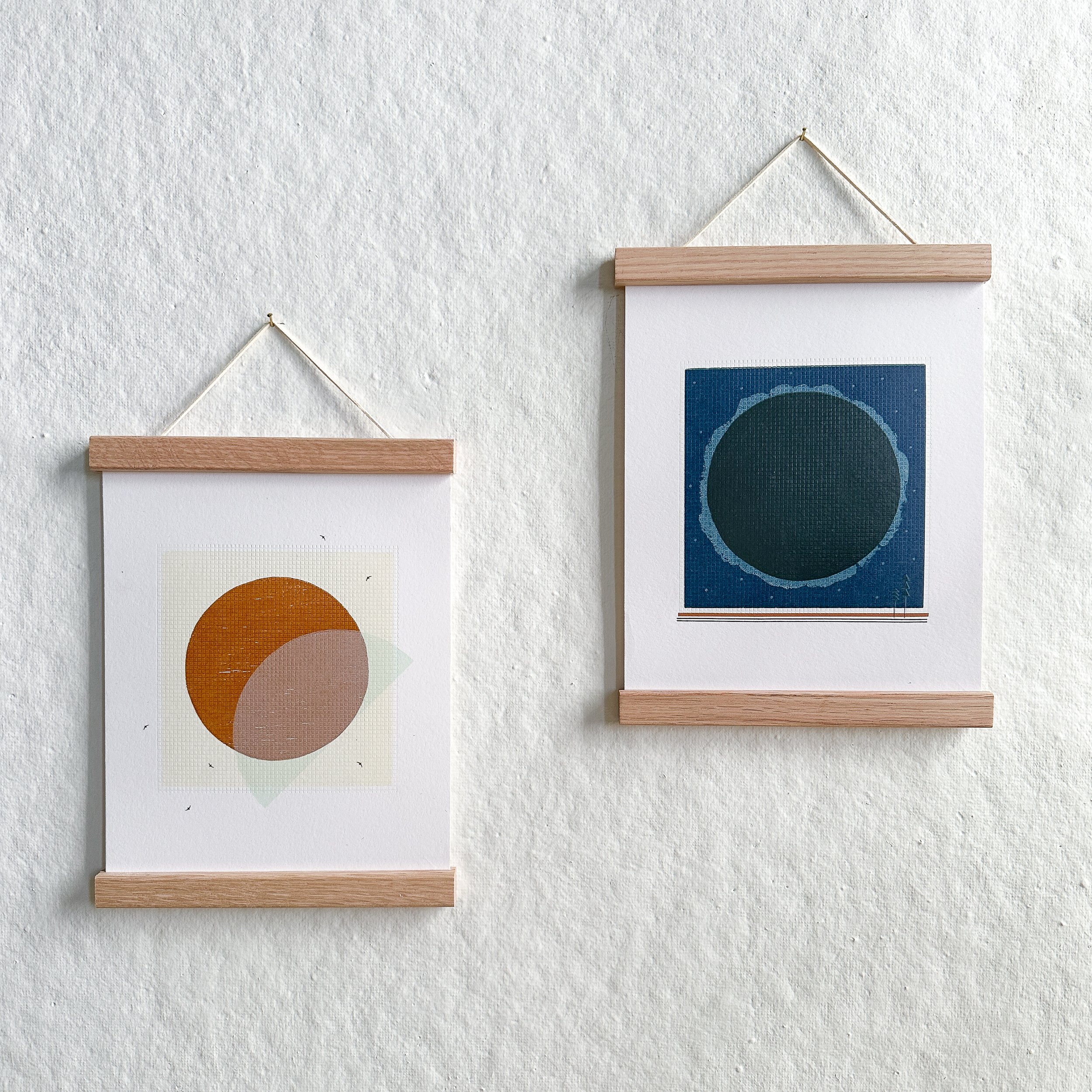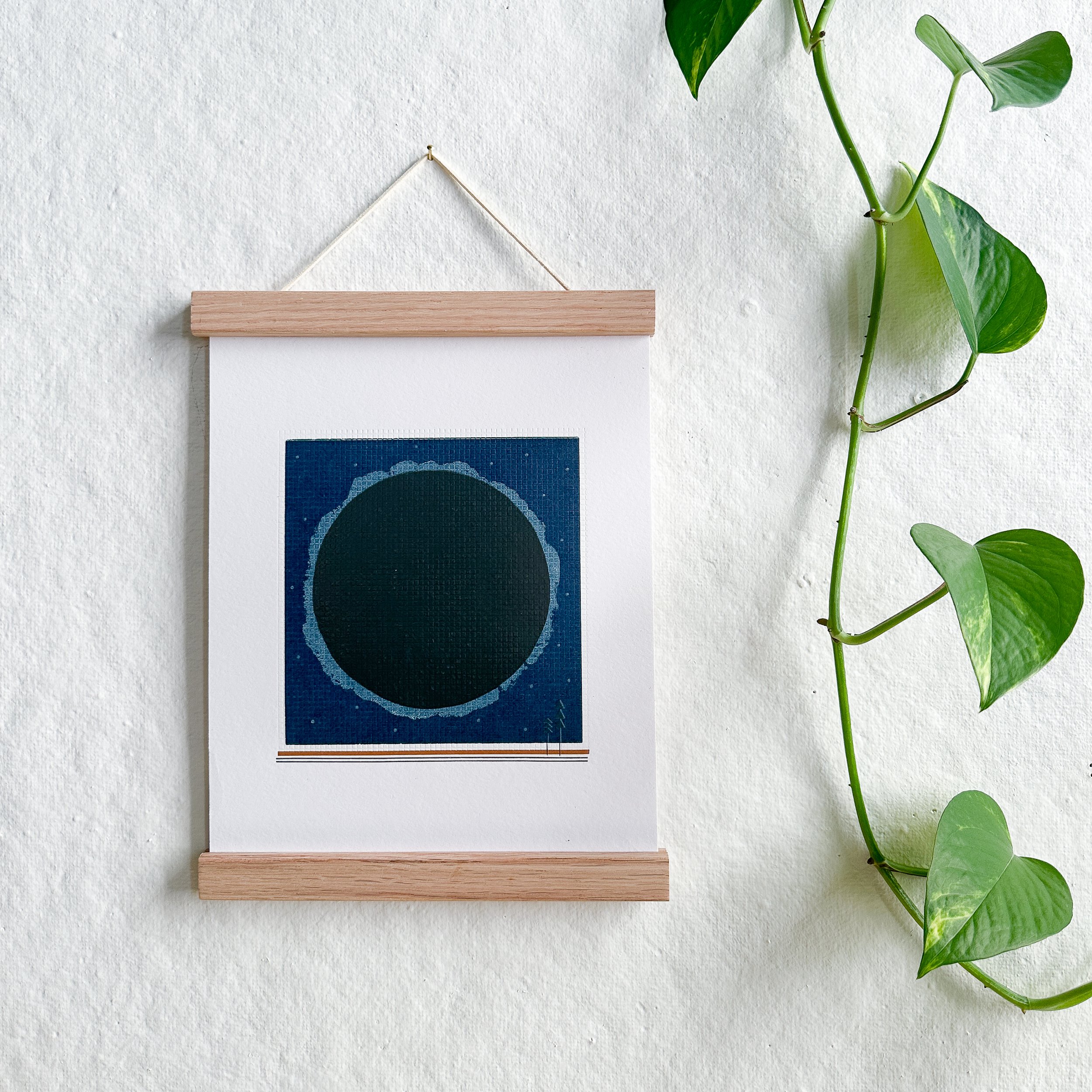Lungs of the Earth Collection — Abstracts Bundle









Lungs of the Earth Collection — Abstracts Bundle
This print package includes the three story-based abstract prints from the Lungs of the Earth Collection about my time spent deep in the Peruvian Amazon Rainforest for an ACEER Foundation Artist Residency. Please read the Artist Statement below to learn more.
-printed with MDF blocks, and a handmade printing block of a palm leaf sheath collected from the Amazon Rainforest.
-printed on 100% recycled paper from French Paper Co, a Michigan-based paper mill operating on 100% hydropower
-$45 from the sale of this print package will be donated to the ACEER Foundation and designated for the fight against the proposed highway corridor threatening the survival of the Maijuna Indigenous Community and the vastly biodiverse rainforest where the Maijuna sustainably live off the land. (Learn more via the artist statement below).
-three native trees planted in a National Forest through the National Forest Foundation with purchase. Learn more about my One Tree Planted initiative here.
-ships with numbered & signed Certificates of Authenticity
-handmade in Pittsburgh, Pennsylvania
Lungs of the earth Abstracts Artist Statements:
These original letterpress prints art a part of my Lungs of the Earth Collection about my time spent deep in the Peruvian rainforest for an artist residency with the ACEER Foundation. My goal with this artist residency was to create colorful artwork that shares the story of the vulnerable biodiverse rainforest and the Indigenous Maijuna community in their fight against the proposed road construction threatening their land and livelihood.
Key to the Forest print
This print is inspired by the Maijuna and their deeply intuitive connection with the dense forest around them. I found it amazing how we’d be out on a trek, bushwhacking for hours, without a single trail marker and still somehow end up back where we started by the end of the day with the Maijuna as our guides.
The imagery of this print is directly inspired by boat rides we took up the Sucusari River Basin with the Maijuna expertly navigating the narrow route. The forms of the print are specifically inspired by a photo I took of Deibis, a young Maijuna hunter, from my seat in the middle of the boat as he expertly maneuvered our boat.
When the river drops from a spout of drought, the water becomes still and the fallen trees emerge from the river floor. Travel becomes difficult, but we were thankful for our Maijuna guides, as they were prepared for clearing the path—and they did so with such grace and ease, as if they were dancing on the river. They’d jump from log to log, with bare toes skimming the water’s surface, carefully calculating exactly where to cut a log so it would drop to the water below and slowly drift down river, clear of the boat. The river in this region would be completely impossible to navigate without the Maijuna.
It became clear to me that the Maijuna were the key to any access of the dense rainforest in the region and they deserve to be respected as so on a national and international level with respected protections in place for their land and livelihood as Indigenous peoples safeguarding the precious biodiverse rainforest.
The arched emerald shape in the center of this piece represents the Maijuna guides on the ends of the boats and the shape fits like a key into the outer moss green arch shape that represents the rainforest. I collected a fallen palm leaf sheath from the Huacrapona palm (Iriartea deltoidea) while in the rainforest and experimented with tile mounting it to a MDF block to give the outer moss arch shape an added texture unique to the rainforest.
The One That Glows
This print is inspired by a rare and seemingly magical sight on a night hike in the rainforest.
We were told by our lodge guide, Roldán, that there was a surprise for us down the trail, but we’d have to go at night to see it. Excited and a little nervous, I headed out into the night, headlamp in tow, with the group of researchers and conservationists. We walked quiet and slow, noting a new insect discovery at nearly every turn. The rainforest does not sleep!
Eventually, our guide told us we had made it to the spot of the surprise. We looked around confused, wondering if we had missed something. “Turn your lights off,” Roldán hinted. In the middle of the dense rainforest at night, we hesitated, chuckled nervously, then obliged.
“Look up, you’ll see the stars…” The dense swath of stars shone brightly through the gaps in the canopy. “...now look down at the stars…”
We shifted our focus to the forest floor and were met with amazement and confusion— the shining stars were… on the ground? No… they weren’t stars. All around us were small scattered shapes shining in a cool blue faint glow in the stark darkness.
They were leaves with bioluminescent fungus, scattered on the ground in a halo around a single tree in the vast forest. It is the only tree with this glowing fungus that Roldán has ever found in his decades in the rainforest. My eyes misted over while we all picked up the leaves and began waving them around in the darkness like little kids with glowsticks.
According to our group’s tropical biologist, Riley, the glowing fungus eats leaf litter and he has seen it elsewhere in the tropics, but never near as bright as the glow we saw that night, and never around a single tree like this. Roldán has found other Terminalia trees like the one he took us to that glows, but the others don’t have the glowing fungus. It remains a mystery why this one Terminalia tree hosts this vibrant bioluminescent fungus on its fallen leaves, but I like to believe that somewhere out there in the vast forest, there are other trees basking in the glowing halo of their fallen leaves on the darkest of nights.
In Good Company
This print was inspired by the biodiversity and interconnectedness of the rainforest as discovered on my every day hikes across the forest floor during my residency. Each day I’d try to break free from the group of researchers and conservationists for a little alone time strolling the forested trails by our basecamp to soak up inspiration for this print series. I felt isolated from the bustling outside world on these slow strolls but never lonely, as the rainforest was never quiet nor empty.
Every tree I passed had at least one other plant or fungus growing up its trunk, if not ten. There wasn’t a single bare tree found. The variety of tree and plant combinations filled the majority of my camera roll. I don’t think I found any two of the same tree and plant combinations during the entirety of my trip.
Every single living thing in the rainforest was entwined with another, pairing together for mutual survival. No one was lonely, they were all in good company — hugging, hanging out and chatting with each other like a lively dinner party.
It became clear to me on these hikes, that the interwoven plant life of the rainforest is a microcosm of all of life on this planet, intrinsically interconnected through our communal living space on this big beautiful orbiting sphere. What happens in the rainforest affects what happens at home, wherever your home might be on this planet.
The Rainforest, its biodiversity and its people who sustainably care for it & depend on it are in trouble and need help. The latest threat to the health of the Amazon, and therefore the health of the planet, comes from the Peruvian Government with a proposal to build an illegal 135 km highway corridor directly through one of the most dense and biodiverse sections of legally protected rainforest. This highway would devastate the biodiversity of the forest, the Indigenous Maijuna people’s sustainable food resources and one of the world’s largest carbon sinks, releasing tons of carbon into the atmosphere, warming the planet even further, affecting us all.
$14 of every print bundle sold will be donated to the ACEER Foundation and designated for the fight against the proposed highway corridor threatening the survival of the Maijuna Indigenous Community. If you would like to help the Maijuna, the rainforest and help fight climate change, please also consider signing the petition at change.org — thank you kindly!










